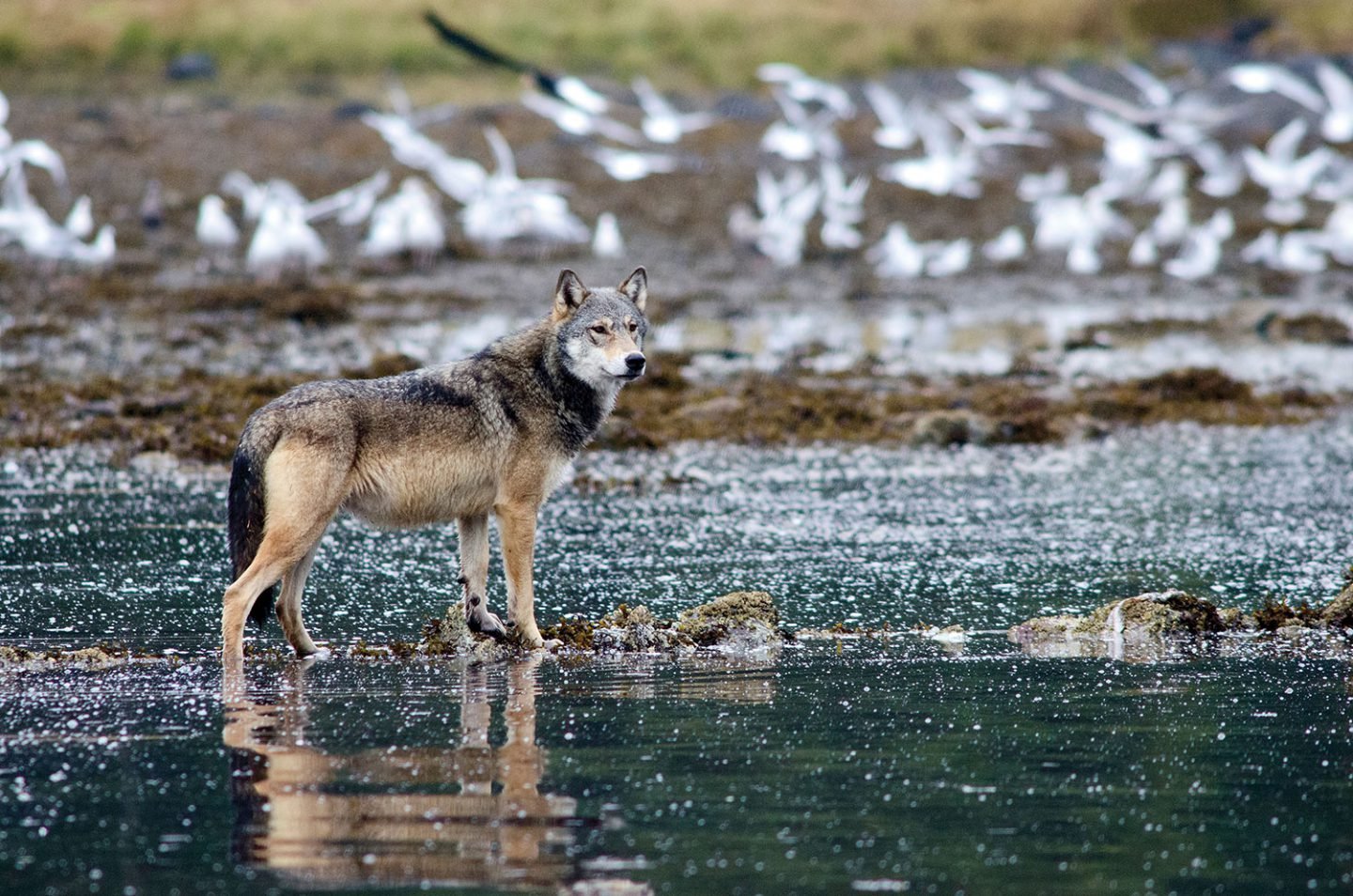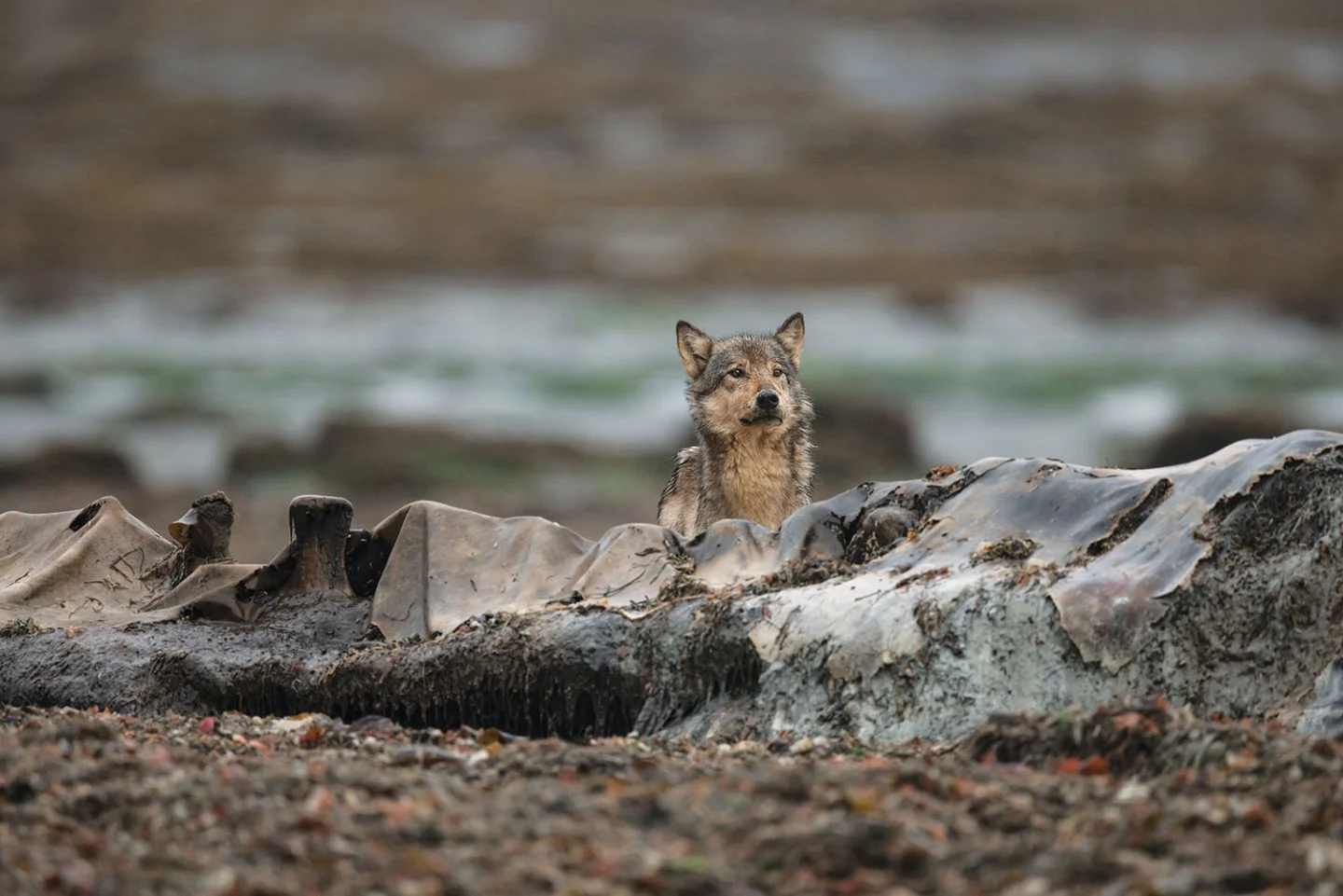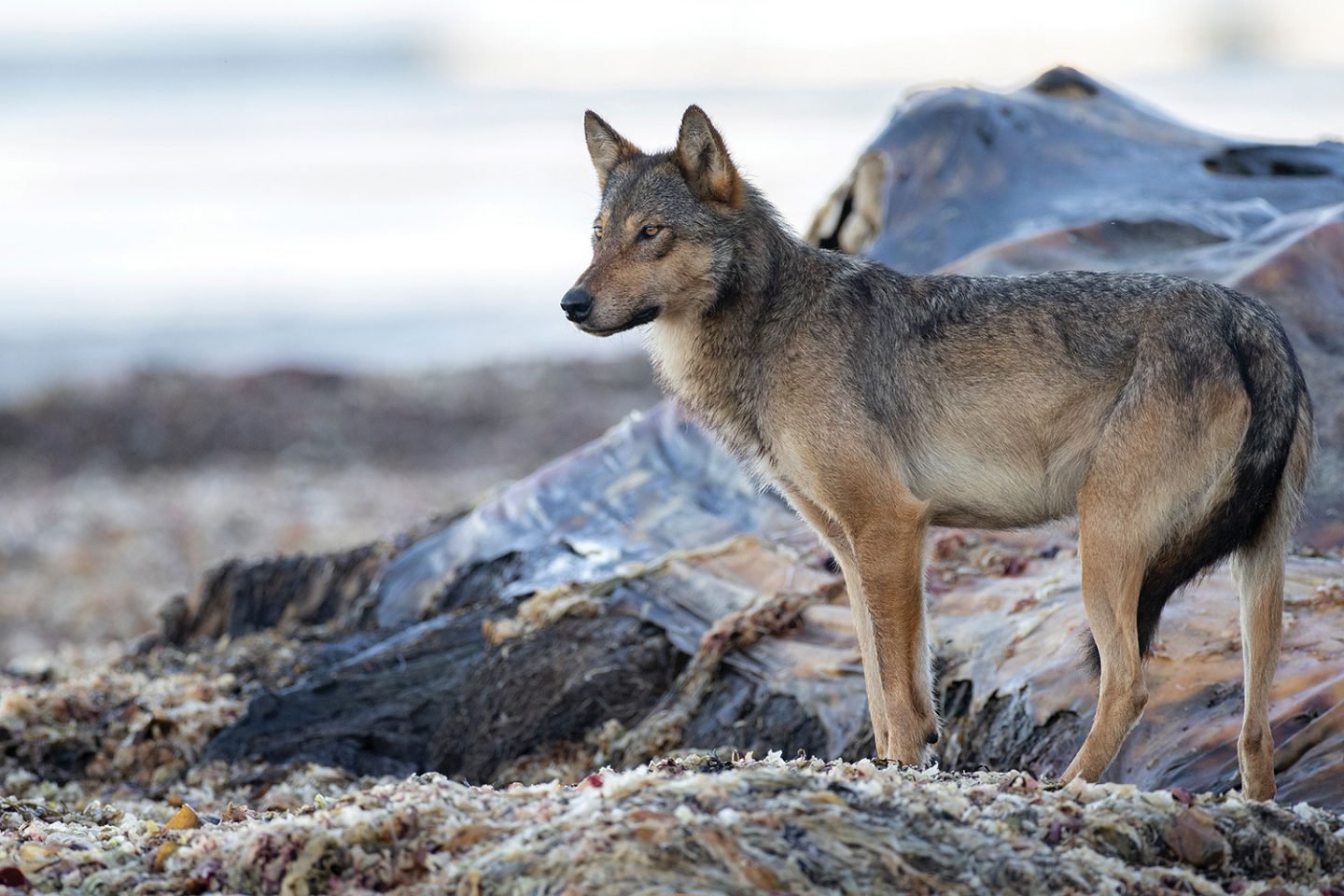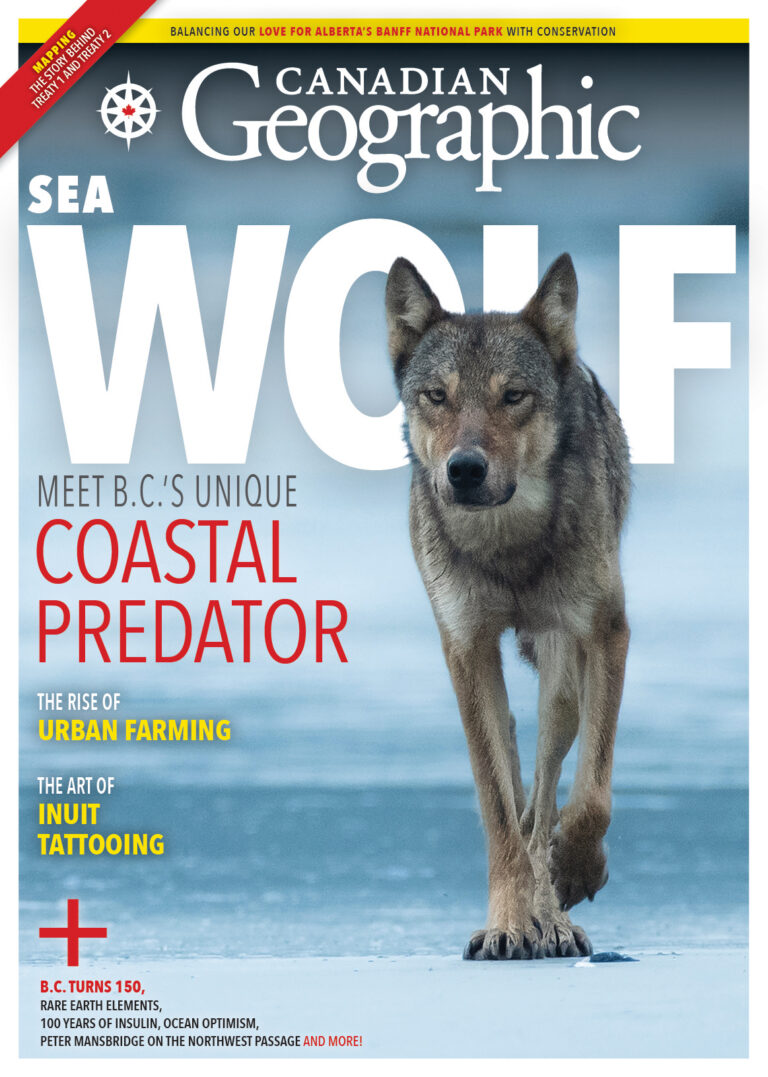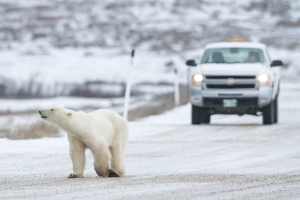This is why today, Paquet, along with the other scientists who work in the Heiltsuk territory take an integrative approach to studying the wolves; one that pairs traditional ecological knowledge with modern science. This strategy has its foundation in a consilience model, or the bringing together of different ways of knowing and evidence from multiple sources, to develop a more holistic understanding of the wolves. And what it has revealed about coastal wolves and their habitat is fascinating.
First, sea wolves — or marine wolves as they’re also known — are fast, powerful swimmers. Housty remembers an encounter he and his father once had while boating: “We looked ahead of us and we could see something in the water. We couldn’t tell what it was, but it was moving. As we got closer, it was actually two wolves swimming across the channel.” One reason the wolves are tricky to spot, is because they move stealthily in the water, their backs and bodies submerged, and with only their eyes, ears and snouts peeking above the surface.
The wolves aren’t just dog paddling, either; they’re distance swimmers. There is at least one pack on Goose Island off the coast, about 13 kilometres from Bella Bella, and there is no other way to get there except to swim. We also know that the wolves aren’t sedentary. Many of them migrate through the archipelago, swimming from island to island throughout the year. At times, they’re tracking the salmon, but other times they show up even when there’s no salmon to be found. That’s because sea wolves have a diverse diet. A recent study found that it can be up to 85 per cent marine-based: lone wolves take down seals and otters, while packs have been spotted feasting on the occasional whale carcass. The carnivores also, surprisingly, eat shellfish. Using their paws, they dig in the sand for clams, and use their powerful jaws to crack open the shells of mussels. As for the remaining terrestrial diet? Like their larger mainland counterparts, the timber wolf, sea wolves also hunt moose and black-tailed deer.



